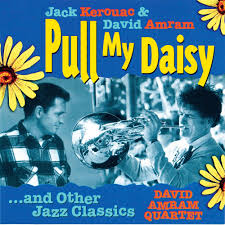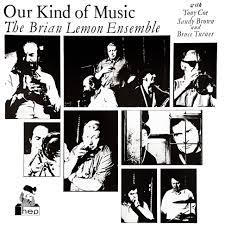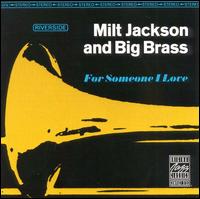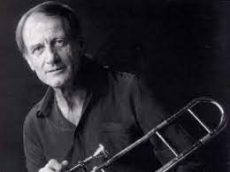
Daily Dose Of Jazz…
David Werner Amram III was born November 17, 1930 in Philadelphia, Pennsylvania. He studied at the Oberlin Conservatory of Music in 1948–1949, and earned a bachelor’s degree in European history from George Washington University in 1952. In 1955 he enrolled at the Manhattan School of Music, where he studied under Dimitri Mitropoulos, Vittorio Giannini, and Gunther Schuller. Under Schuller he studied French horn.
As a sideman or leader, David has worked with Aaron Copland, Thelonious Monk, Dizzy Gillespie, Charles Mingus, Jack Kerouac, Sonny Rollins, Lionel Hampton, Stan Getz, George Barrow, Jerry Dodgion, Paquito D’Rivera, Pepper Adams, Arturo Sandoval, Oscar Pettiford, Allen Ginsberg, Mary Lou Williams, Kenny Dorham, Ray Barretto, Wynton Marsalis, and others that included a wide range of folk, pop, and country figures.
In 1956, producer Joseph Papp hired Amram to compose scores for the New York Shakespeare Festival, the next year staged one of the first poetry readings with jazz, and in 1966 Leonard Bernstein chose Amram as the New York Philharmonic’s first composer-in-residence.
He went on four international musical tours to Brazil, Kenya, Cuba and the Middle East. He conducted a 15 piece orchestra for Betty Carter’s What Happened To Love? album, became an advocate for music education. He composed scores for the Elia Kazan films Splendor in the Grass, and The Arrangement and for the John Frankenheimer films The Young Savages and The Manchurian Candidate.
French hornist and pianist David Amram, who also plays Spanish guitar, penny whistle, sings and composes, has recorded nineteen albums as a leader and twenty-eight as a sideman.
More Posts: bandleader,composer,french horn,guitar,history,instrumental,jazz,music,penny whistle,piano,vocal

Daily Dose Of Jazz…
Hubert Fol was born in Paris, France on November 11, 1925 and learned piano from an early age through lessons from his mother. He also took lessons in violin and clarinet in his teens and early twenties.
As a saxophonist, Hubert worked with Claude Abadie and Boris Vian and co-founded the Be Bop Minstrels with his brother in 1947. In 1949~1950, he toured Europe and recorded with Coleman Hawkins, then worked with Kenny Clarke and Django Reinhardt before embarking on another European tour with Dizzy Gillespie and Rex Stewart.
In the 1960s his health deteriorated, leading to his playing far less frequently.Saxophonist and bandleader Hubert Fol transitioned on January 19, 1995 in Paris.
More Posts: bandleader,history,instrumental,jazz,music,saxophone

Daily Dose Of Jazz…
Raymond Crane was born on October 31, 1930, Skegness, Lincolnshire, England. Refusing to become discouraged with a music instructor who regarded his tooth unsuitable for his designed profession, he started playing trumpet around his city. After being employed in the East Midlands for several years, playing in groupings like the Mercia Jazz Music group, in 1963 he became a member of Bruce Turner’s Leap Music group. This brought him to the attention of the much wider market through concerts and information, such as Heading Places.
Afterwards he played in groups led by Brian Lemon, with whom he previously proved helpful while they had been still in the Midlands, and Stan Greig. Crane frequently accompanied American jazzmen, including Henry “Crimson” Allen, Ray Nance and Costs Coleman.
He occasionally performed as a pianist, which proved helpful to his being a musical pedagogue, teaching and leading a youth jazz band which graduated Martin Taylor and Guy Barker.
Trumpeter Ray Crane, who was a fiery, swing-era-rooted player, transitioned on June 29, 1994 at the age of 63.
More Posts: history,instrumental,jazz,music,trumpet

Daily Dose Of Jazz…
Elmon Wright was born on October 27, 1929 in Kansas City, Missouri to trumpeter Lammar Wright Sr. and the brother of trumpeter Lammar Wright Jr. Following in his father’s and brother’s footsteps, he learned to play the trumpet.
Wright played with Don Redman early in his career, then with Dizzy Gillespie’s first big band in 1945. He then went on to play with Roy Eldridge and then went back to Gillespie’s band, touring and recording with him from 1946 until 1950.
He toured with Earl Bostic for a year in 1954, then worked as a freelance musician in New York City, performing at the Apollo Theater in Harlem with R&B and rock groups. He played with Buddy Rich and Earle Warren in 1959 and recorded with Milt Jackson in 1963. Trumpeter Elmon Wright transitioned in 1984.
More Posts: history,instrumental,jazz,music,trumpet

Three Wishes
Nica was inquisitive about the three wishes Albert Mangelsdorff would request, so she asked and he told her:
- “First, I vant to live long enough to get my playing, so I vould be satisfied.”
- “I vould say, that the life of a jazz musician vouldn’t interfere vith family life.”
- “I vish that people all over the vorld vould get smart enough that there vould be peace forever.”
“I should have made that the first vish.”
*Dialect transcribed by Nica de Koenigswarter
*Excerpt from Three Wishes: An Intimate Look at Jazz Greats ~ Compiled and Photographed by Pannonica de Koenigswarter
More Posts: baroness,history,instrumental,jazz,music,pannonica,three,trombone,wishes




